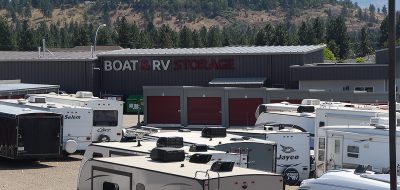Two weeks ago week we looked at the type of inverters commonly used in motor homes. This week we will touch on applications of inverters in our home on wheels. We will deal with integrated types only, generally these are 2,000 watt output and larger. We will also focus only at the inverter operation, not the charger function.
The inverter basically takes 12 volt direct current from the batteries and inverts it to 120 volts alternating current, similar to that in your house. 
In doing this, it produces either a M.S.W. (Modified Sine Wave) or a T.S.W. (True Sine Wave) depending on the make and model. Modified types are the cheaper of the two to produce, and are the ones found currently on the majority of motor homes today. True sine types are becoming far more popular recently. This is due to lower prices recently and more sine wave affected electronics that are being introduced into today’s modern coaches.
The inverter in a standard configured propane equipped motor home is generally wired to power the following.
- TV’s, receivers and entertainment centers
- Most duplex 120 outlets
- Microwave
- Awnings, if 120 VAC (Such as Gerard)
- Refrigerator (If 120 volt AC)
- Ice maker (If 120 volt AC)
The balance of AC powered loads such as air conditioners, hot water tank, electric stoves and of course, battery chargers only operate on shore power.
Some microwave models can be damaged if used to cook using a modified wave inverter. This damage can result in causing the efficiency to drop substantially after continued use. While wiring the inverter to the microwave outlet is normal, which at least keeps the clock on time, it may be wise to run the generator for any microwave cooking while boondocking. This applies to M.S.W. inverters, but is not applicable to T.S.W. installations. Additionally, some models of modern residential refrigerators may be susceptible to modified sine wave inverter current. The issue is control board related. This primarily affects newer all electric coaches. These really require a true sine wave inverter to assure trouble free operation.
Inverters in conventional propane equipped motor coaches are generally turned off when not required, particularly if dry camping. This is due to a continuing draw, albeit light, of electric current, even if all loads are off. First, there is a search mode that essentially searches for a load, even in stand-by mode. Secondly, TV’s, microwave readouts and many modern receivers use power in the “off” mode. The TV’s and receivers remain on stand-by to be instant “on”.
Inverters in all electric coaches are generally always left on. This is required as the refrigerator, if it is a residential type, is 120 volt AC only. Inverters can be left on even when connected to shore power. Once connected, the unit shuts down the inverter and operates as a charger and will automatically take over in the event of a power disruption.
Now, as if the inverter/charger didn’t do enough, there are models available with a built-in automatic generator starting board. These will automatically start and stop the generator as required to keep the batteries within operating voltage range. Additionally, the auto start can be wired to the air conditioning thermostat and provide instant start should the temperature within the coach rise above a user preset value. Once the temperature is within the set temperature range, it will automatically shut the generator down until the next event.
If you have never had a coach with an inverter/charger, you don’t know what you are missing. The convenience of having household power without the need for continually running the genset, is well worth the costs involved. If you already have an inverter equipped coach, you probably wouldn’t have a coach without one again.
With A Current Alternate View – Lug_Nut – Peter Mercer






Pingback: url
Pingback: my homepage
Lug_Nut
Michael, I agree, 6 volt batteries are the best for large house banks. Sounds like you have plenty of battery power for boondocking. Thanks for your informative input.
Michael
I did a little research, and found general consensus on 6V golf cart batteries offering the best performance per dollar. They literally perform according to the weight; more lead = more plate surface = more storage = more weight. I bought a pair of “145” golf cart batteries (140 pounds of lead combined), and rewired a 4 KW inverter with 3 stage charger into the system with 4 gauge between the batteries and the inverter. The old charger is sitting on my workbench- it was one of those cheap, one-stage battery ruiners that come with most trailers. Everything but the AC and ‘fridge are powered through the inverter, and it switches automatically between shore power and batteries. “Primitive” camps are suddenly not so primitive, generator use is now limited to hitting the batteries, and I haven’t been able to put a dent in the batteries in a single day. It was hardly a little job (splitting the AC power bus, etc.) but the best thing I’ve done to the trailer.
Lug_Nut
Philip Basham, The cable size you are referring to should be more than adequate for the application, however, it is important to always follow the manufacturer’s guide lines for such installations. Wire size is also dependant on the cable run, or length. Good luck.
Lug_Nut
David Weekley, Good information, and thank you. Thanks for your input.
Philip Basham
I want to mount a 2000 watt inverter in my motor home and use while I’m driving. To do this, I want to use the motor homes 30 amp plug in my inverter. Is there any concerns for me to worry about? I will be using 1/0 gauge cable from my inverter to my batteries. Please help.
Philip Basham
David Weekley
I have a 2000 watt inverter/charger. The manual very clearly specifies what gage of wire to be used for AC connection (10 awg) and 12 volt DC connection to the batteries (2/0 awg).
My calculations show that an 1100 watt microwave will require about 110 amps.
Please advise people to look very closely at specifications for inverter/chargers. I found one unit that only supplies about 3 to 5 amps of charging current. These folks: http://www.topsalesdepot.com/poinwinchamo.html
Thanks for your blogs.
Lug_Nut
Joe, Sounds like a great set-up. You might consider installing a relay that is triggered by the engine running that switches the inverter on to the frig. That way, if it is an auto switching unit, it will run on propane only when you are stopped and without 120 AC power.
Joe Kleinsmith
I just had my 08 Damon Outlaw out-fitted with solar including monitors, four solar panels, 2000 watt inverter w/remote and four 6 volt – 300 amp hour AGM batteries. One advantage of having solar and inverter application is that while driving (engine running) I can take the refrigerator Off of propane and have it operate on 110 without negative battery draw. Thus $aving propane while driving. When stopped for over an hour, I put the refrigerator back on LP unless plugged into shore power.
Lug_Nut
Jeff, 11 amp at 120 vac draw will require 10 times the input plus efficiency loss on the 12 vdc supply, or about 120/125 amp hours. When sizing up your battery bank, remember you can only use about one half of the dc amps available as you want to always not exceed drawing your batteries below a 50% charge level. Drawing them down below this will substantially shorten their usable life.
For you second question, it depends on the size and battery type of the battery bank and the output of the charger unit. Also some chargers come with 3 or 4 stages. If it’s a new installation, first figure out the size of the battery bank you require to operate the loads. From the total amp hours you can now calulate the amp output required for the charger to have the needed ability. Generally, you will probably end up with a battery bank and charger combination that will recharge from a 50% level to near 100% in about 2 to 2 1/2 hours.
I hope this is of some help, There are many variiables that have to be dealt with, but that is a short quick view.
Jeff K.
How do I determine the battery requirements to support a inverter?
if an appliance draws 11 amps AC @ 120v how many 12 volt DC amp hours
will that draw? By knowing that I can calculate the total available power per battery.
Also, how do I calculate the amount of time it will take to re-charge a battery once it is depleated?
Thanks so much for your help,
jeff K
Ernie Embacher
Good inverter information, no mention was made that robust wiring is required from a 12V battery to power a 1000W or bigger inverter, and that substantial battery capacity is required if you would like to power a refrigerator or similar load for more than 10 or 15 minutes.